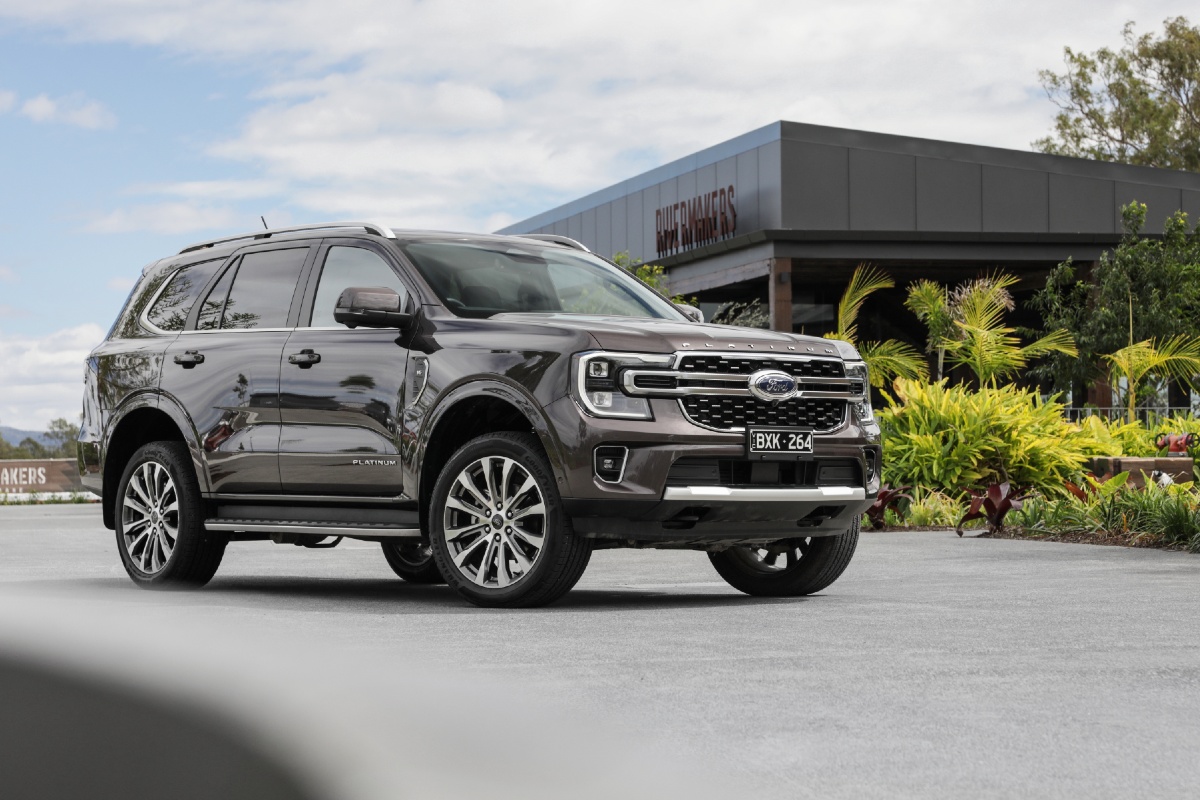
What is it?
Ford Australia’s second most important model, behind the Ranger ute. And that’s not just because the pair are based on the same basic underpinnings and have been developed together.
The key reason it’s so important is it’s Ford’s second best-selling model behind the Ranger. In fact, together the pair typically make up more than 80 per cent of the brand’s total sales in this country.
But the Everest is not just a Ranger with a wagon body. While they share many similarities, there are key differences that separate them and give each an unique character.
We recently tested the new Everest line-up both on- and off-road, sampling the new flagship Platinum and now full-time Sport model with the new V6 turbo diesel engine, as well as the popular Trend and entry-level Ambiente grades with the carry-over bi-turbo four-cylinder.
Does it have any racing pedigree?
It’s about as far as you can get from a racing car, but there is a touch of motorsport influence that has filtered down from the Ranger Raptor to the Everest – and it’s one of the reasons that has become so popular.
Unlike some of its competitors in the ute-turned-SUV segment that simply add a wagon body onto the ute chassis, Ford has given the Everest the same special rear suspension set-up as the Raptor. There’s no racing-inspired Fox Shocks, but the rear leaf-springs from the Ranger are swapped out for a Watt’s link, coil-spring rear-end set-up that vastly improves ride quality and handling.
What’s under the bonnet?
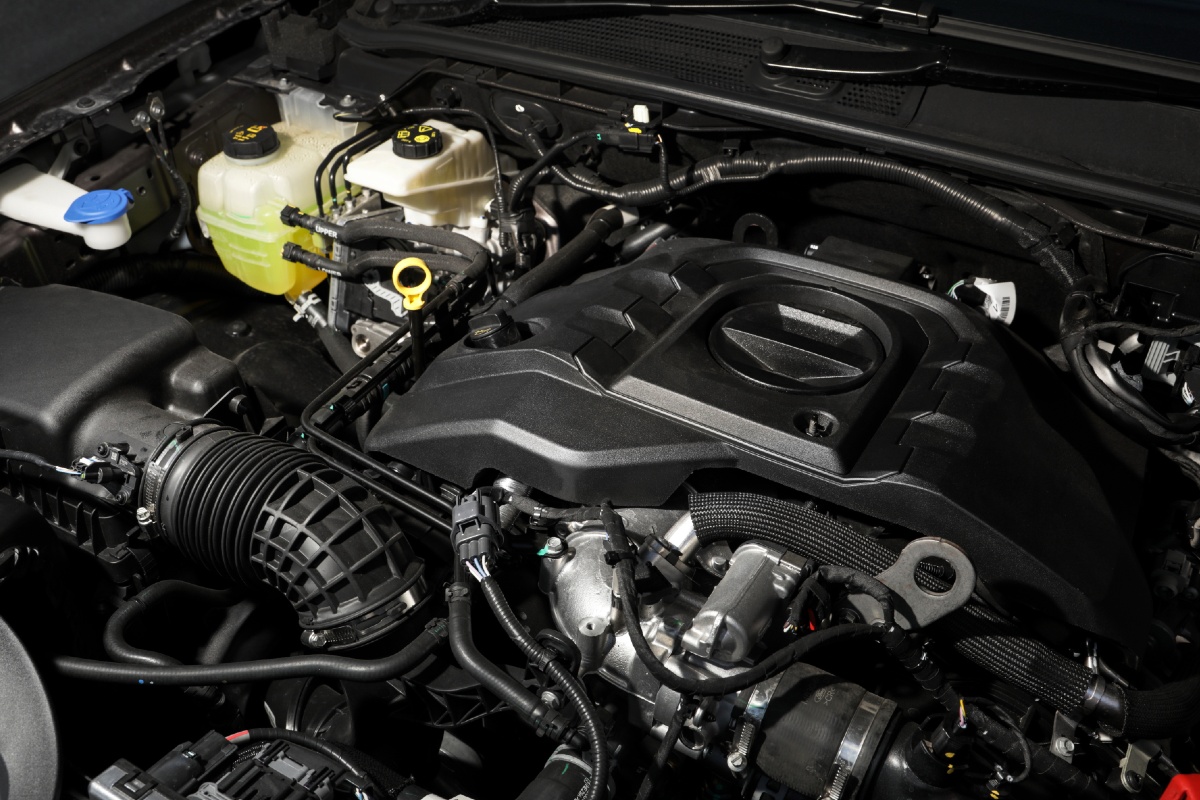
The Everest is a more focused model compared to the Ranger, which is to say it doesn’t have to appeal to such a broad range of potential customers. That means Ford has been able to simplify the powertrain line-up, with the choice down to either the 2.0-litre bi-turbo four-cylinder diesel or 3.0-litre V6 turbo diesel, both paired to a 10-speed automatic transmission.
The high-grade Platinum and Sport models are only available with the new full-time four-wheel drive system from the Ranger, but the Ambiente and Trend can be had with either that 4×4 set-up or the rear-wheel drive 4×2 option.
As we discovered in the Ranger, the 2.0-litre engine is very good in its own right. It makes 154kW of power and 500Nm of torque, which is more than enough to pull the sizeable Everest along.
However, after you’ve driven the V6 it’s hard to see the bi-turbo in the same light again. That’s because the V6 makes 184kW and 600Nm, which means it just does everything easier and quicker.
There isn’t too much to split the pair on fuel economy either, despite the V6 being so much bigger and more powerful. The bi-turbo returns a claimed 7.2-litres per 100km, while the V6 has a rating of 8.5L/100km. While that’s a large gap on paper, given the real-world performance benefits of the bigger engine it’s hard to go past it.
How does it handle?
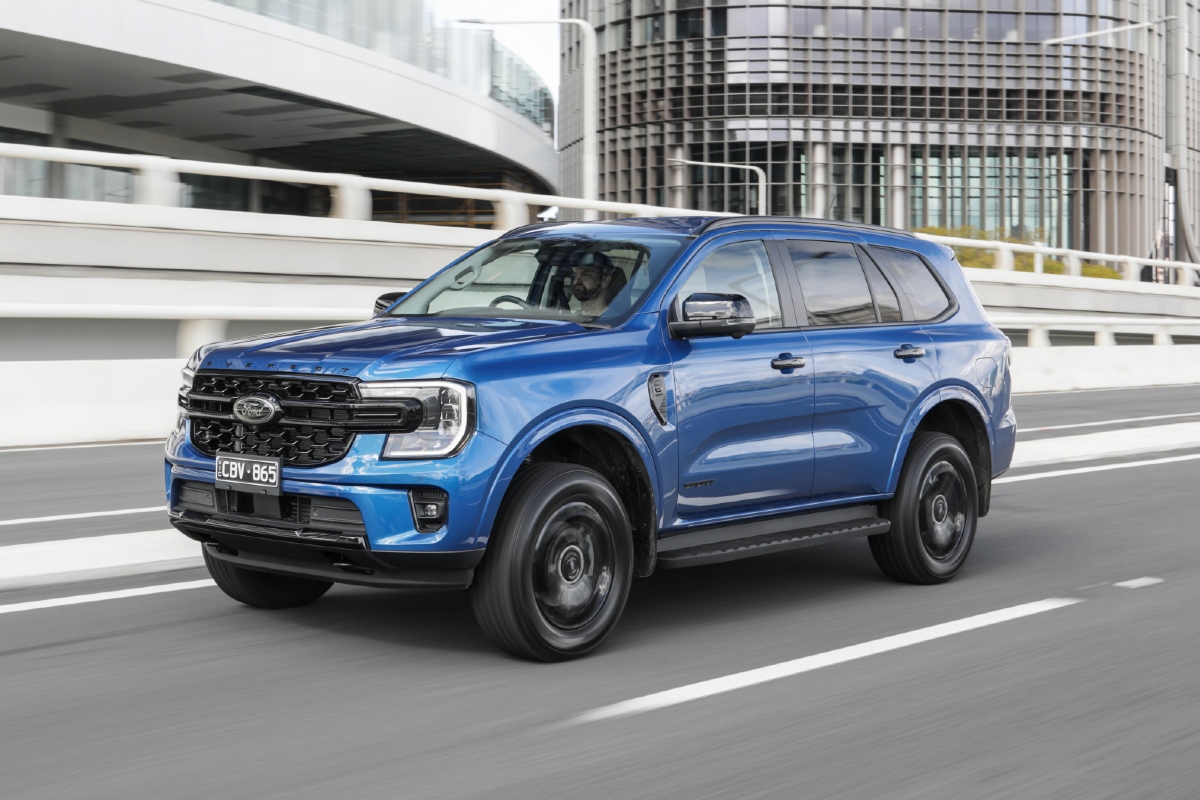
What has always made the Everest such a compelling proposition is that in an era of ‘soft-roaders’, which have increasingly become more and more on-road focused in the name of comfort and easier urban driving at the expense of off-road capability, the Ford can do both.
This is an SUV that’s as capable of doing the school run as it is crossing the outback.
The good news is, Ford didn’t mess with that winning formula either, with this new model feeling even more refined and well-mannered on-road but still capable of getting down and dirty on a very challenging off-road course Ford used for the local launch event.
However, it’s worth noting that Ford can tailor the car depending on what you plan to use it for primarily, specifically the high-grade models. That’s because the Platinum comes standard with a 21-inch alloy wheel and the Sport a 20-inch alloy rim both fitted with all-season tyres, neither of which are ideal for off-road use.
So, as a no-cost option for those who prefer more adventurous driving trips, Ford can swap out those bigger wheels for an 18-inch wheel with off-road tyres. It was this set-up we drove at the launch on all types of surfaces, and even for daily urban use they did an admirable job so it doesn’t feel like a step down in ride comfort or handling.
Where would you most like to drive it?
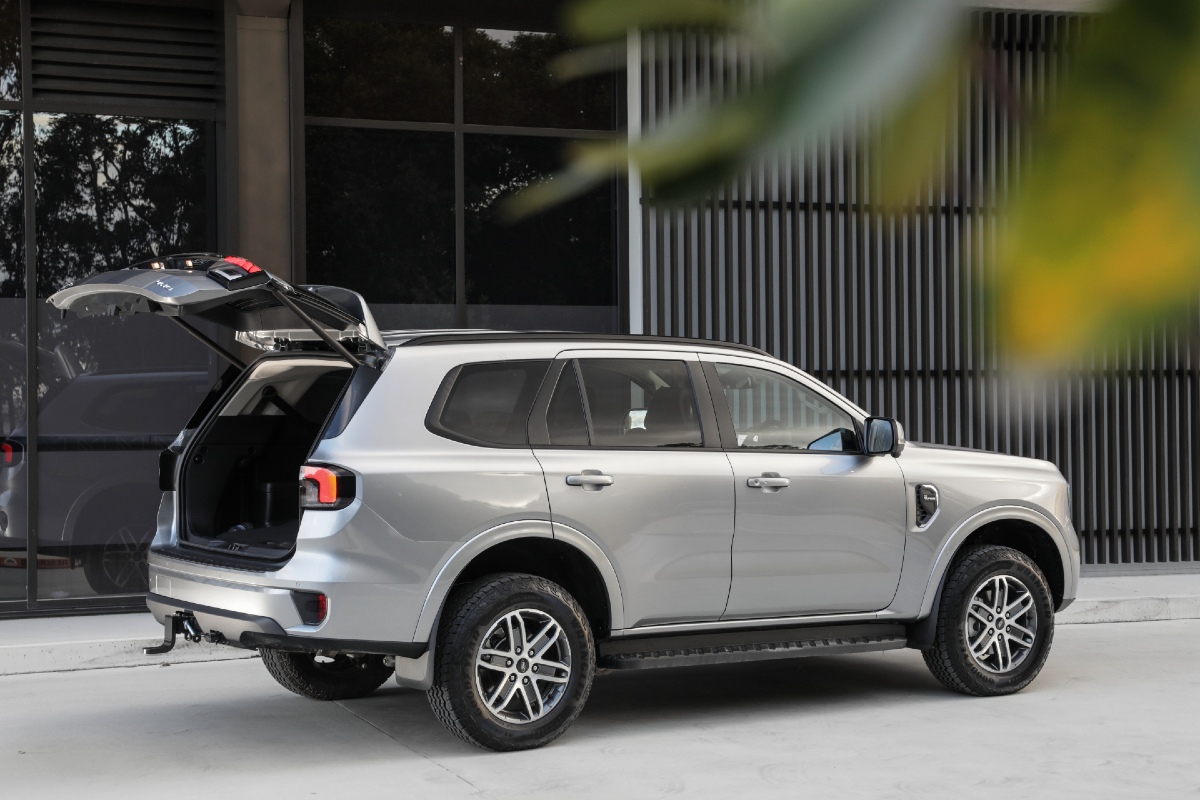
Fortunately we were able to experience the new Everest in a variety of conditions – city, highway and twisty mountain roads as well as through mud, ruts, water crossings and steep, slippery descents – and it felt at home in all of them. This really is a family-friendly adventure vehicle for all seasons.
What’s the interior like?
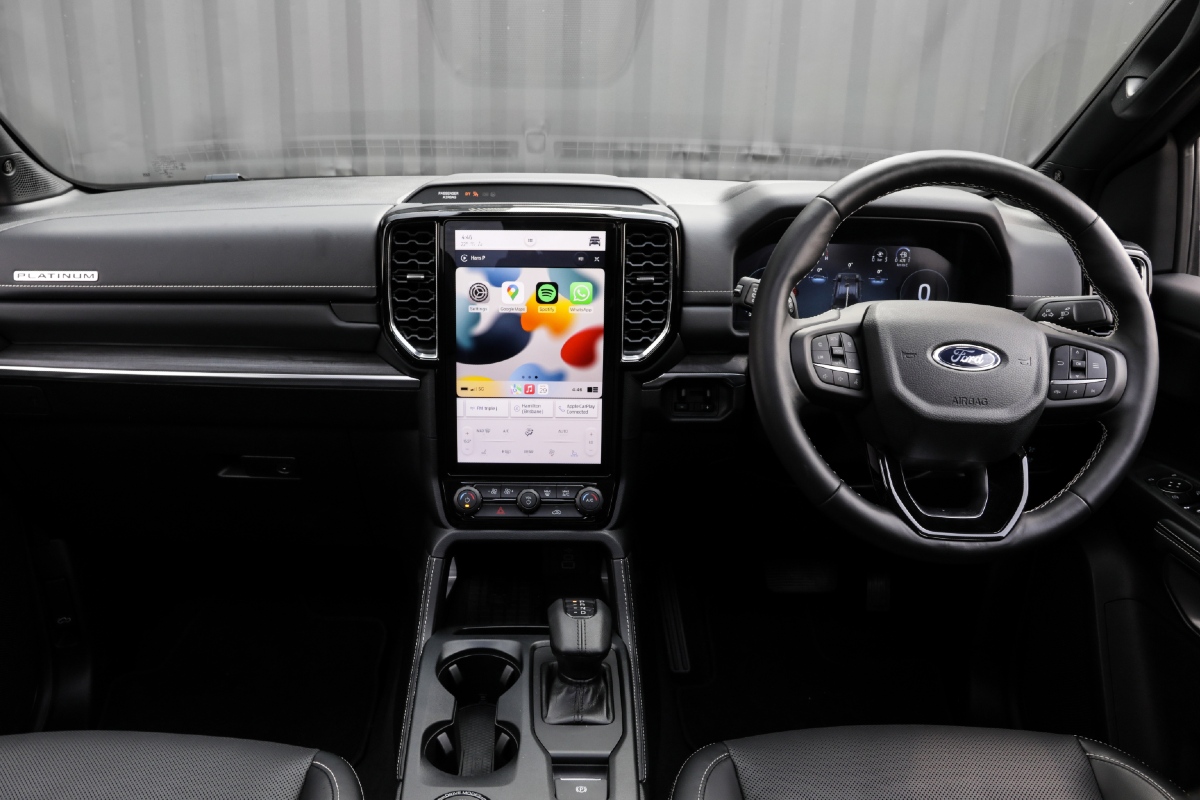
Like a Ranger. In fact, it’s almost identical to the Ranger, with only a few minor trim differences to make it look and feel a bit more family-friendly.
It’s not really a bad thing though, as Ford had worked hard to upgrade the Ranger to be a more premium ute. This includes digital instrument displays and the large, tablet-style infotainment screen in the centre of the fascia to run most functions.
Well, at least that’s the case in the front row, behind the driver and front passenger things get a little different as the Everest is designed for families and comes standard with three rows of seats.
The second row space is good, on par with what you find in the Ranger. The third row is good for an SUV too, with adequate space and, importantly, air-conditioning vents to keep those in the back comfortable.
How much does the Ford Everest cost?
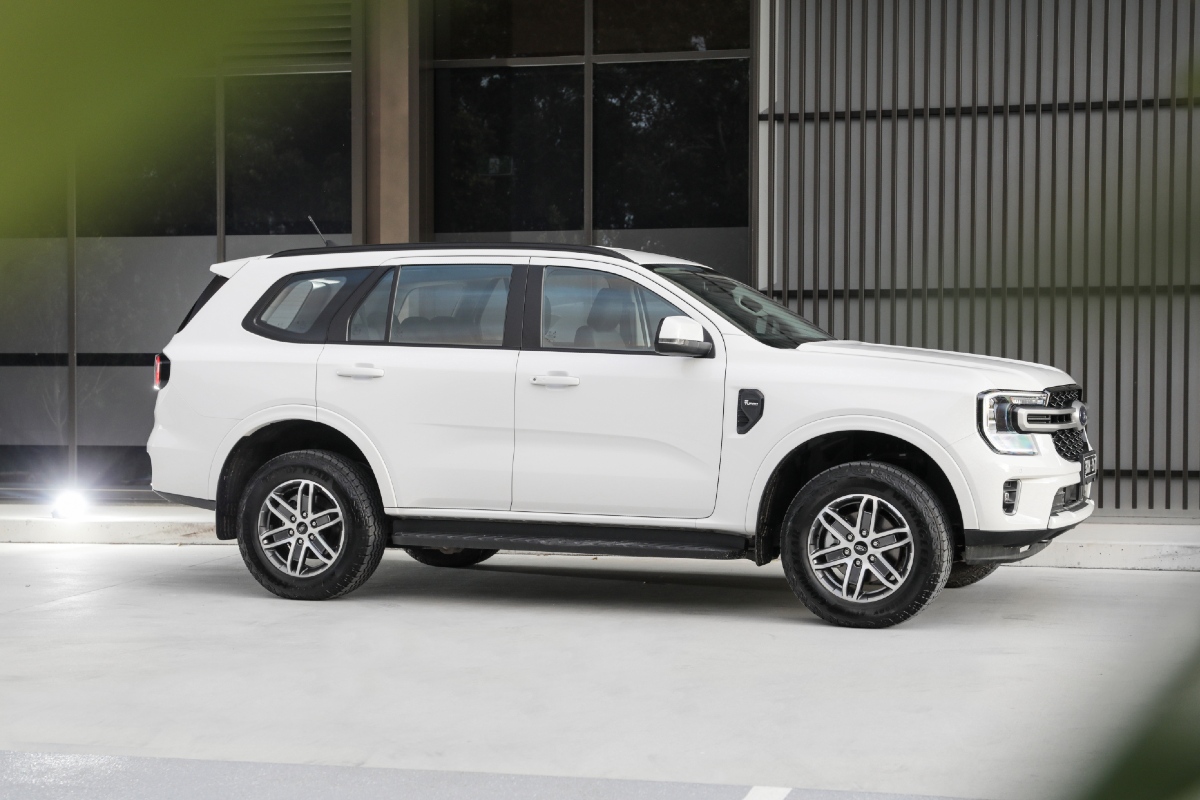
As we’ve already mentioned, there are four trim levels for the new Everest – Ambiente, Trend, Sport and Platinum. As you’d expect given the level of technology and features across the range, including the introduction of the V6, the Everest is one of the more expensive choices in its class.
The range begins at $52,990 for the Ambiente 4×2 and $57,990 for the 4×4. Stepping up, the Trend 4×2 starts at $60,290 and the Trend 4×4 at $65,290.
For the V6 models, the Sport 4×4 is priced from $69,090 and the Platinum caps the range at $76,880
Note, all prices exclude on-road costs.
Would I buy one?
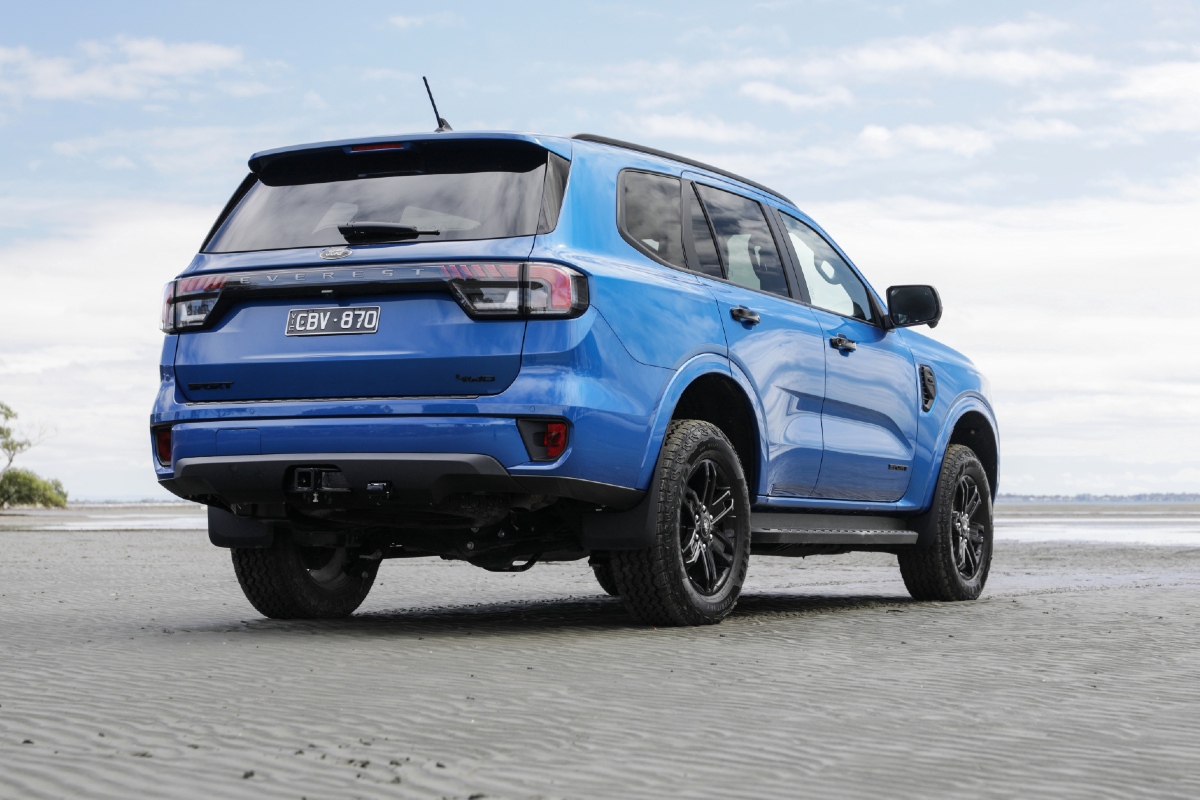
Yes, the Everest is the ideal SUV for those who crave weekend adventure but need comfort and practicality during the week. The pick of the range is arguably the Sport, with its V6 engine, permanent four-wheel drive system, rugged looks and slightly more affordable price tag.
However, that’s not to say even the entry-level Ambiente bi-turbo doesn’t have appeal, because it’s a very fine SUV too.
Ford relies heavily on the Everest and Ranger for its sales fortunes, but thankfully this is another excellent addition to the line-up.
2022 Ford Everest Sport price and specifications
| Price: | From $69,090 plus on-road costs |
| Engine: | 3.0-litre V6 turbo diesel |
| Power: | 184kW at 3250rpm |
| Torque: | 600Nm at 1750rpm |
| Transmission: | 10-speed automatic, four-wheel drive |
| Fuel use: | 8.5L/100km |
| Wheels: | 20-inch alloys |
| Tyres: | 255/55 R20 |
| Length: | 4914mm |
| Width: | 1923mm |
| Height: | 1842mm |
| Weight: | 2274kg |
| 0-100km/h: | No claim |













Discussion about this post